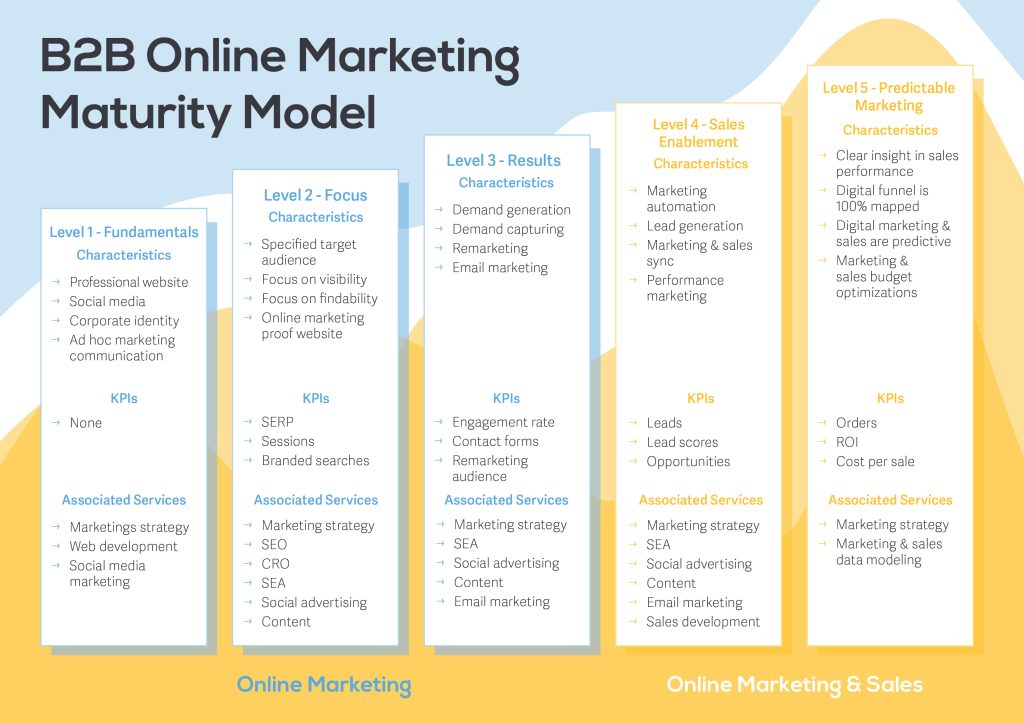Almost every B2B organization has realised that online marketing has become a vital part of the way target audiences get introduced to their business. Gartner research shows that the overall trend is still for online marketing budgets to increase in 2023. Social advertising, which currently takes up most of the paid media budget, was identified as the main digital channel in which more will be invested in 2023.
Shifting focus to online marketing and increasing online budgets does not necessarily (directly) increase marketing success. The effort and budget need to be applied to the parts of your organization that need it the most. For example, when your website is not measurable and findable in Google, resulting in hardly any visitors on your website (to be measured), it makes no sense to implement an (expensive) marketing automation system to realize online success. In such a situation, the effort and budget will be better spent on increasing the organization’s measurability, findability and visibility before thinking about smart automation.
Every organization that wants to grow ultimately wants a sophisticated online marketing and sales machine, where the entire pipeline and efforts are measurable and predictable. Building such a machine is possible, but it takes time and needs focus. To provide tools for organizations that strive for this and want to get more marketing and sales success from online marketing on an ongoing basis, we work with the Leadgate B2B Online Marketing Maturity Model.
What is the Leadgate B2B Online Marketing Maturity Model?
The Leadgate B2B Online Marketing Maturity Model helps B2B organizations focus on the right online marketing activities based on the maturity phase they have reached. It focuses on 4 important aspects that need to be realized through online marketing: brand awareness (long-term success) and demand capturing in combination with lead or deal generation (short-term success).
From 5 maturity levels, we work step-by-step towards an online marketing maturity level in which we work on both short and long-term marketing and sales successes. The collaboration between marketing and sales also plays a major role in this, which becomes especially important during the higher maturity levels.
Each maturity level comes with its own characteristics: these characteristics give a picture of what certain online marketing components look like in the maturity level in question and what they focus on. In level 1 and level 2 the focus is mainly on measurability, findability, and visibility (brand awareness) and in level 3 the focus shifts to demand generation and demand capture, after which in level 4 and 5 the focus shifts to quality deeper in the marketing & sales funnel.
Separate KPIs are defined for each maturity level, with which progression and online marketing success can be made measurable. With continuous progress and success on all set KPIs within the current maturity level, focus areas that are needed to reach the next maturity level can be examined. In this way, step-by-step progress is made in a measurable way and value is realized for the organization, with the ultimate goal of realizing an online marketing and sales machine, where the entire online pipeline and effort is measurable and predictable
Want to dive deeper into the Online Marketing Maturity levels and find out how your IT business can move closer towards B2B Online Marketing maturity? Then read on in our white paper: Achieve targeted growth with the B2B Online Marketing Maturity Model.






